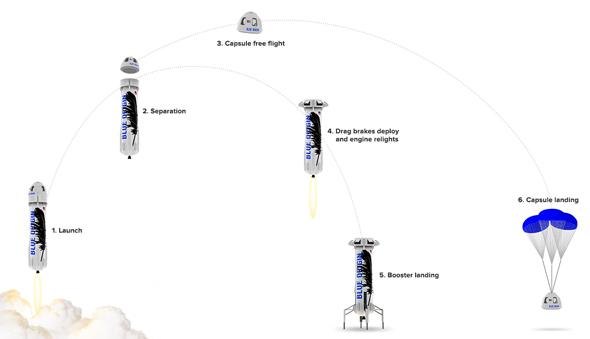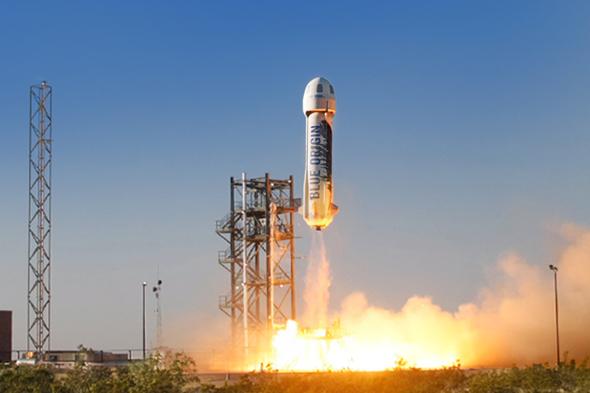I’m a big fan of commercial space—private companies building rockets to get into space. I write about SpaceX a lot, of course, since it is very public about its progress. I don’t write as much about Blue Origin, run by Amazon’s Jeff Bezos, because it’s more secretive, keeping things very close to the vest.
So I was caught a bit off-guard Thursday when the company announced that it had performed a test flight of its suborbital New Shepard rocket! The video is very impressive:
On Wednesday, the rocket lifted an uncrewed test capsule to a height of 93.5 kilometers. The capsule, which is designed to hold up to three passengers, separated cleanly from the vehicle, and landed under three parachutes safely on the West Texas ground.
The rocket itself is designed to land vertically, slowing under thrust and settling down on deployable landing legs. This part of the test didn’t perform so well; the hydraulics for the legs didn’t work, and it presumably crashed. This is similar to the problem SpaceX had with its first attempted landing of the Falcon 9 booster in January.

Drawing by Blue Origin
This is pretty amazing news, and very welcome. The plan is that Blue Origin will offer seats on its capsule in two years, selling tickets for suborbital flights—that is, straight up and down (or, more accurately, a ballistic arc), not going around the Earth as in orbital flight. It eventually plans to build rockets capable of achieving orbit.
The current engine it has designed, the BE-3, uses liquid oxygen and hydrogen and has 110,000 pounds of thrust. It is already working on the BE-4, which will produce 550,000 pounds. That upgraded version will be for its next-generation rocket, Very Big Brother, which will be used to go into orbit. The company expects that to be flight-ready in 2017, and it also has a contract with United Launch alliance to provide the BE-4 engines for the new ULA Vulcan rocket.
I’ll note this test flight didn’t quite reach space, technically. That is (somewhat arbitrarily) designated as 100 km above sea level and is called the Kármán line. But I think getting 93.5 percent of the way is still pretty danged impressive.
These are exciting times for space exploration. Although the U.S. doesn’t have the capability to launch Americans into orbit from American soil, that day is fast approaching. The gap we’re in right now is comparable to the amount of time between the end of the Apollo program and the first Space Shuttle launch. The difference now is that instead of relying on a single (and arguably over complex) launch vehicle, we’ll soon have several to choose from, and they’ll be far less expensive than the Shuttle.
It is my fervent hope that in 10 years we’ll be looking back at this crewed launch gap as a very small stumble on the way to space. And that the number displayed here will also be headed skyward.
